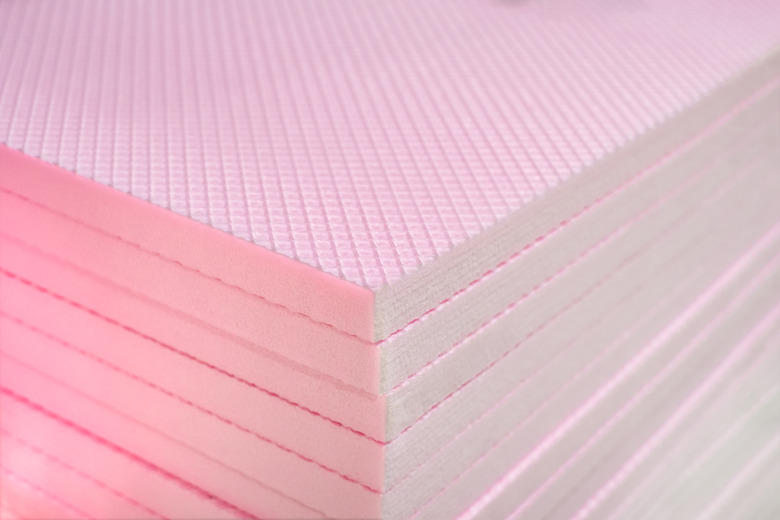What Types Of Closed-Cell Rigid Insulation Are Waterproof?
Insulation isn't the first building material that comes to mind when water resistance is the topic of conversation. Most types of home insulation need to remain dry to maintain their R-value or insulating ability. Enter foam board insulation. Although few building materials are genuinely waterproof, closed-cell rigid foam board insulation, though it won't waterproof a basement, can reduce moisture penetration. Where moisture and water vapor are a concern in home construction, PIR, XPS, and EPS insulation can offer solutions.
Polyiso Foam Board
Polyiso Foam Board
Polyisocyanurate rigid foam board insulation is better known as polyiso, PIR, or ISO foam board. Polyiso is an insulating plastic product in sheet form that typically has a foil facing on both sides.
The most common place to find polyiso foam board is in the construction of industrial roofing. However, in residential construction, the material is an excellent rigid insulation for the interior side of basements and foundations.
The foil facing provides an excellent water barrier, and polyiso, at least initially, has the highest R-value of the three types of foam board at R6.5 per inch of thickness. If you have only limited space and require a high insulating value per inch, polyiso could be your best choice.
Polyiso foam board insulation has a few drawbacks, though. First, this material carries the highest price tag of the three types of foam board. Second, water can become trapped between the foil layers, which quickly erodes polyiso's high R-value. Finally, the R-value rating is only applicable if the material is in a warm setting, meaning it works best when it doesn't have to work very hard.
XPS Foam Board
XPS Foam Board
Extruded polystyrene, or XPS, is one of two types of polystyrene, or petroleum-based, rigid foam board insulation. XPS is less costly than polyiso but more expensive than EPS. XPS is arguably the most versatile of the three types. With proper installation, it can act as a vapor barrier and below-grade insulator for indoors and outdoors, and it offers a relatively high initial R-value.
You may recognize XPS foam board upon seeing its pink, green, or blue smooth-faced surface. Its construction resists water penetration — the thicker the material, the better it repels water. With an R-value of R5 per inch, it's a cost-effective insulating material when constructing a basement with limited space.
There are some arguments against the use of XPS, though. The top concern is that producing the material emits chemicals that deplete the ozone layer. However, many companies are in the process of creating greener XPS materials that eliminate this problem. Also, despite the water-resistant nature of XPS, correct installation is crucial for effectiveness, and some R-value gets lost over time to degeneration.
EPS Foam Board
EPS Foam Board
EPS is the other type of polystyrene foam board insulation. It's the least costly option and has a lower R-value of R4 per inch. A common use is below-grade exterior foundation insulation. Concrete forms known as insulating concrete forms use EPS.
EPS is a somewhat water-resistant insulation but will allow water to penetrate its surface. However, its breathability enables it to dry out quickly after becoming wet. EPS is also available in a more water-resistant, foil-faced version.
Other downsides of EPS are that the material is fragile and crumbles easily under impact, and bare EPS insulation without a foil face isn't an effective vapor barrier.
